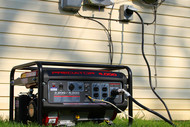What Is The Right Size Generator For Your House?
19th Jun 2019
The key to selecting the right size generator for your house is working out and adding up the load (wattage) for everything you need to power at once.
Ask yourself are you planning to use everything in your home or just the basics like keeping your food cold, your lights on, charging phone/laptops, do you want to run your house air conditioner or heating system? The first thing you need to know when selecting a generator, is how much power will you need, so work out exactly what you will require to power.
When it comes to choosing the right size generator, here's what you need to know.
Different types of generators available
Generators come in two types: portable and stationary, also called standby. Portables cost less to buy and install, but you’ll need to fuel it and maintain it. A portable also needs to be wheeled outdoors, started, and connected to what you want to power. A stationary model, needs to be professionally installed outdoors, which adds time and expense, but it starts automatically when power cuts off, needs periodic maintenance checks, so it will start automatically when needed.
Wattage - What to know
To determine the generator size, the easiest way is to add up the wattages of everything you want to power in your home. Keep in mind that some appliances, such as air conditioners, refrigerators, and sump pumps, require more wattage on start up than they do when running. We recommend contacting your local electrician to take a reading off your meter box for your total amperage being used. Then select a model with a slightly higher rated wattage to accommodate your existing needs but also handle anything additional you might add later. Also, allow a few hundred dollars to install a transfer switch, which allows easier connections for a portable generator to be connected.
Quick guide to what size generator you might need
Small portable: 3,000 to 4,000 watts
What it can power:
The basics, including a:
- Refrigerator (600 watts)
- Microwave (1,500 watts)
- Sump pump (600 watts)
- Several lights (400 watts)
- TV (200 watts)
Midsized portable and small stationary: 5,000 to 8,500 watts
What it can power:
Same as small portables, plus a:
- Portable heater (1,300 watts)
- Computer (250 watts)
- Heating system (500 watts)
- Second pump (600 watts)
- More lights (400 watts)
Large portable: 10,000 watts
What it can power:
All of the above, plus a:
- Small water heater (3,000 watts)
- Central air conditioner (5,000 watts)
- Electric range (5,000 watts)
Large stationary: 10,000 to 15,000 watts
What it can power: Same as large portable models, plus a:
- Clothes washer (1,200 watts)
- Electric dryer (5,000 watts)
If possible, try not to wait until a major storm is forecast to buy a generator. In addition to facing a more limited selection, you’ll cheat yourself out of the weeks you need to plan your purchase and get it installed before you can enjoy the protection of a generator that will serve you for storms to come.





